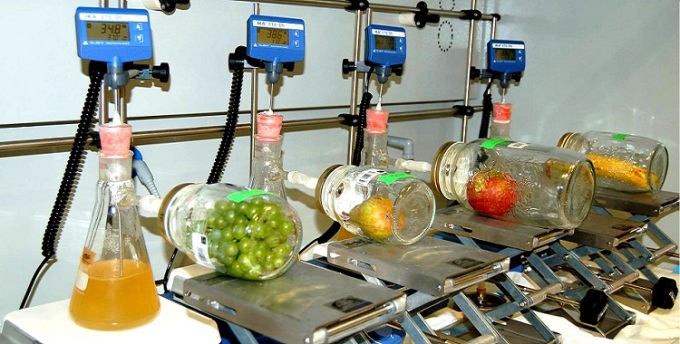Ken research announced recent publication on, "Country Focus: Healthcare, Regulatory and Reimbursement Landscape in US". The report is an essential source of information on and analysis of the healthcare, regulatory and reimbursement landscape in the US. It identifies the key trends in the country's healthcare market and provides insights into its demographic, regulatory, and reimbursement landscape and healthcare infrastructure. Most importantly, the report provides valuable insights into the trends and segmentation of its pharmaceutical and medical device markets. It uses data and information sourced from proprietary databases, secondary research, and in-house analysis by team of industry experts. Profiles and SWOT analyses of the major players in the pharmaceutical market gives exceptional market view. The effective sales and marketing strategies can be understood by understanding the competitive landscape and analysing competitors' performance help gain competitive advantage. It is a very useful tool to organize your sales and marketing efforts by identifying the market categories and segments that present the most opportunities for consolidation, investment and strategic partnership
HEALTHCARE LANDSCAPE:
The population of the US in 2015 was 326 million, having grown at a CAGR of 1% from 2008. In 2015, the government spent 17.5% of GDP in 2015 on medical and health science and exported USD 32.8 billion of pharmaceutical products. These positive growth trends can be primarily attributed to
- Availability of latest drugs and technologies
- Universal health coverage
- Access to healthcare facilities
Major players in the medical device market include Johnson and Johnson, GE Healthcare, Siemens, Medtronic, and Philips Healthcare. Health care in the United States is provided by many distinct organizations. Health care facilities are largely owned and operated by private sector businesses. 58% of US community hospitals are non-profit, 21% are government owned, and 21% are for-profit. According to the World Health Organization (WHO), the United States spent more on health care per capita, and more on health care as percentage of its GDP, than any other nation in 2011. Health spending was paid for by the government in 2013, funded via programs such as Medicare, Medicaid, the Children's Health Insurance Program, and the Veterans Health Administration. People aged under 67 acquire insurance via their or a family member's employer, by purchasing health insurance on their own, or are uninsured. Health insurance for public sector employees is primarily provided by the government In the U.S. Ownership of the health care system is mainly in private hands, though federal, state, county, and city governments also own certain facilities.
The non-profit hospitals share of total hospital capacity has remained relatively stable for decades. There are also privately owned for-profit hospitals as well as government hospitals in some locations, mainly owned by county and city governments. The Hill-Burton Act was passed in 1946, which provided federal funding for hospitals in exchange for treating poor patients.
REGULATORY AND LICENSING LANDSCAPE:
Healthcare is subject to extensive regulation at both the federal and the state level, much of which "arose haphazardly". Under this system, the federal government cedes primary responsibility to the states under the McCarran-Ferguson Act. Essential regulation includes the licensure of health care providers at the state level and the testing and approval of pharmaceuticals and medical devices by the U.S. Food and Drug Administration (FDA), and laboratory testing. These regulations are designed to protect consumers from ineffective or fraudulent healthcare. Additionally, states regulate the health insurance market and they often have laws which require that health insurance companies cover certain procedures although state mandates generally do not apply to the self-funded health care plans offered by large employers, which exempt from state laws under pre-emption clause of the Employee Retirement Income Security Act.

In 2010, the Patient Protection and Affordable Care Act (PPACA) was passed by President Barack Obama and includes various new regulations, with one of the most notable being a health insurance mandate which requires all citizens to purchase health insurance. While not regulation per se, the federal government also has a major influence on the healthcare market through its payments to providers under Medicare and Medicaid, which in some cases are used as a reference point in the negotiations between medical providers and insurance companies. State governments maintain state health departments, and local governments (counties and municipalities) often have their own health departments, usually branches of the state health department. Regulations of a state board may have executive and police strength to enforce state health laws. In some states, all members of state boards must be health care professionals. Members of state boards may be assigned by the governor or elected by the state committee The McCarran–Ferguson Act, which cedes regulation to the states, does not itself regulate insurance, nor does it mandate that states regulate insurance. "Acts of Congress" that do not expressly purport to regulate the "business of insurance" will not preempt state laws or regulations that regulate the "business of insurance." The Act also provides that federal anti-trust laws will not apply to the "business of insurance" as long as the state regulates in that area, but federal anti-trust laws will apply in cases of boycott, coercion, and intimidation.
REIMBURSEMENT LANDSCAPE
The healthcare reimbursement system is an extremely multifaceted framework of obtaining payment for services. One of the most problematic issues is that the “rules” governing healthcare reimbursement change frequently, with government payers sometimes changing on a day-to-day basis. n addition, the price for the service is not the “retail” price that the provider charges for it. Payers have a “maximum allowed payment” for every CPT code, which is the beginning point (not the end point) of determining what they will pay. The payer then adjusts the maximum allowed payment with “claim edits,” which they use to disqualify payment for some services, and “payment rules,” which usually reduce payments for some services. The American Medical Association (AMA) describes how payments are affected by these two rules.
Key Factors Considered in the Report
US Healthcare Industry Research
US Pharmaceutical Industry Research
Pharmaceutical Market Revenue US
US Pharmaceutical Market Imports
Export Volume Of Pharmaceutical Products US
US Medical Devices Market Research
Healthcare IT Market Research US
US Cardiovascular Device Market Future Outlook
US Orthopedic Devices Market
For more coverage click on the link below:
Related links:
Contact Us:
Ken Research
Ankur Gupta, Head Marketing & Communications
Ankur@kenresearch.com
+91-9015378249
Ken Research
Ankur Gupta, Head Marketing & Communications
Ankur@kenresearch.com
+91-9015378249








